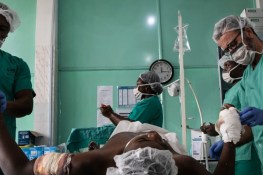Like many developing countries, Cameroon could experience another pandemic breakout giving its vulnerability as it shares
borders with other countries like Nigeria, Democratic Republic of Congo and Central African Republic where cases of the monkey pox virus infection were reported by the World Health Organization (WHO).
It should be noted that the monkey pox virus was earlier detected in 2020 in Ayos, Center Region of Cameroon. However, the virus was contained before it could claim lives; the virus was once again detected in 3 human infections in 2022. It is believed that insufficient health care facilities in some remote areas of the country and mismanagement of the already scarce funds could be the main causes of disease transmission, propagation and potential persistence, such as cholera.
The Advocacy Adolescent Health Promotion in the Southwest Region of Cameroon has reported that 40% of health centers closed down in 2020 due to the ongoing political crisis in these localities. Moreover, there has been an overcrowding of people escaping from crisis and settling in the major cities like Buea and Limbe, leading to easy spread of viruses (COVID-19 and cholera) and congestion in the few medical centers available. The lack of equipment to treat the cholera pandemic has claimed more lives in the Southwest Region any other region of Cameroon. The number of reported cases of cholera in Cameroon, as of April 30, 2022, was 6,652, as compared to 309 cases in 2021 (WHO).

Nevertheless according to WHO, Cameroon has made significant progress by improving and acquiring health care facilities, which resulted in reducing mortality rate by 71.8%. As of 2016 Cameroon had 10 health regions, 189 health districts, 1800 health areas and approximately 5166 public and private health facilities spread throughout the national territory. Access to medical doctors in Cameroon in 2016 was at 2.19 per 10,000 inhabitants.
The health facilities are organized into seven main categories: general hospitals, central hospitals, regional hospitals, district hospitals, district medical centers, integrated health centers and ambulatory health centers. According to the Health Sector Strategy 2016-2027 reports, the proportion of the national budget allocated to the Ministry of Public Health varies between 5% and 5.5%. « Health financing in the collection of health resources (private and public financing) and their pooling is
not sufficiently organized and the funds not properly monitored if beneficiaries do optimal used. The existence of various health financing since 2013 is the evidence of the lack of an integrated approach and insufficient coordination in financing management. Moreover, the low level of information on funding allocated in the sector (those of the private sector, partner
administrations, health care/service providers, as well as those of regional and local authorities) did not help in preventing the duplication of resources, hindering the coherent management of the most vital needs of the targeted populations. »

There are other diseases like cardiovascular diseases, vascular cerebral accident and cancer that are deadly diseases still spreading out on the national territory. For a better care of such in the future, the Cameroonian government need to improve on balance and checks in the medical sector.



